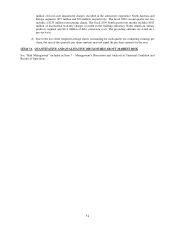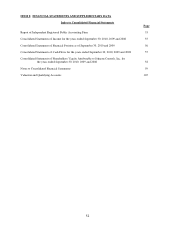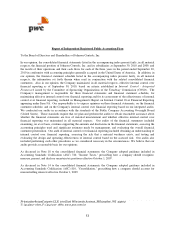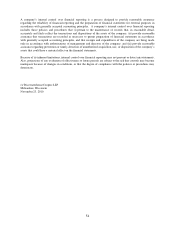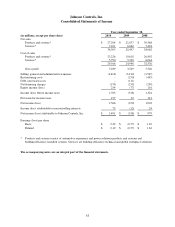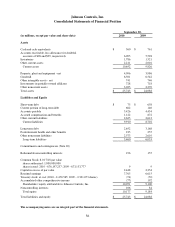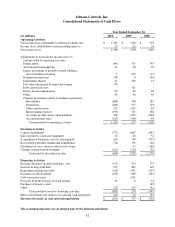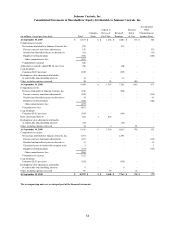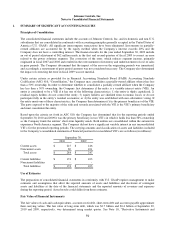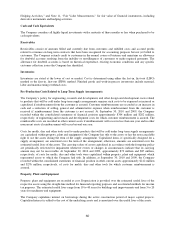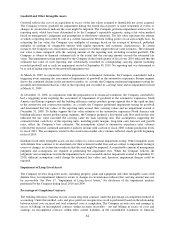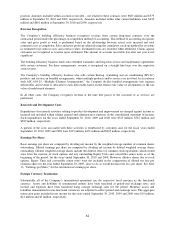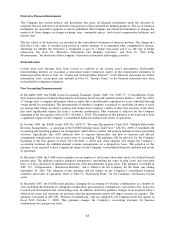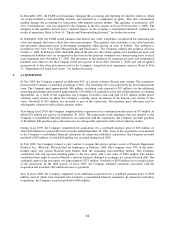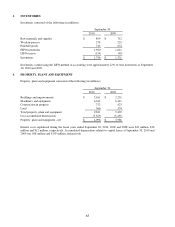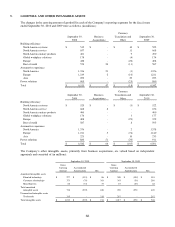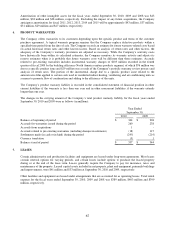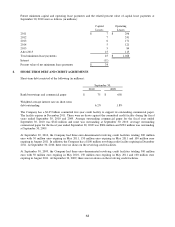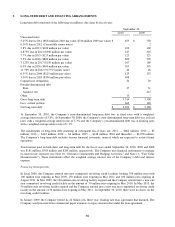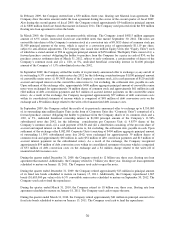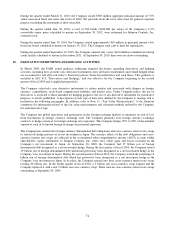Johnson Controls 2010 Annual Report Download - page 61
Download and view the complete annual report
Please find page 61 of the 2010 Johnson Controls annual report below. You can navigate through the pages in the report by either clicking on the pages listed below, or by using the keyword search tool below to find specific information within the annual report.61
Goodwill and Other Intangible Assets
Goodwill reflects the cost of an acquisition in excess of the fair values assigned to identifiable net assets acquired.
The Company reviews goodwill for impairment during the fourth fiscal quarter or more frequently if events or
changes in circumstances indicate the asset might be impaired. The Company performs impairment reviews for its
reporting units, which have been determined to be the Company’s reportable segments, using a fair-value method
based on management’s judgments and assumptions or third party valuations. The fair value represents the amount
at which a reporting unit could be sold in a current transaction between willing parties on an arms-length basis. In
estimating the fair value, the Company uses multiples of earnings based on the average of historical, published
multiples of earnings of comparable entities with similar operations and economic characteristics. In certain
instances, the Company uses discounted cash flow analyses to further support the fair value estimates. The estimated
fair value is then compared with the carrying amount of the reporting unit, including recorded goodwill. The
Company is subject to financial statement risk to the extent that the carrying amount exceeds the estimated fair
value. The impairment testing performed by the Company in the fourth quarter of fiscal year 2010 indicated that the
estimated fair value of each reporting unit substantially exceeded its corresponding carrying amount including
recorded goodwill, and as such, no impairment existed at September 30, 2010. No reporting unit was determined to
be at risk of failing step one of the goodwill impairment test.
At March 31, 2009, in conjunction with the preparation of its financial statements, the Company concluded it had a
triggering event requiring the assessment of impairment of goodwill in the automotive experience Europe segment
due to the continued decline in the automotive market. As a result, the Company performed impairment testing for
goodwill and determined that fair value of the reporting unit exceeded its carrying value and no impairment existed
at March 31, 2009.
At December 31, 2008, in conjunction with the preparation of its financial statements, the Company concluded it
had a triggering event requiring the assessment of impairment of goodwill in the automotive experience North
America and Europe segments and the building efficiency unitary products group segment due to the rapid declines
in the automotive and construction markets. As a result, the Company performed impairment testing for goodwill
and determined that fair values of the reporting units exceed their carrying values and no impairment existed at
December 31, 2008. To further support the fair value estimates of the automotive experience North America and
building efficiency unitary product group segments, the Company prepared a discounted cash flow analysis that also
indicated the fair value exceeded the carrying value for each reporting unit. The assumptions supporting the
estimated future cash flows of the reporting units, including profit margins, long-term sales forecasts and growth
rates, reflect the Company’s best estimates. The assumptions related to automotive experience sales volumes
reflected the expected continued automotive industry decline with a return to fiscal 2008 volume production levels
by fiscal 2013. The assumptions related to the construction market sales volumes reflected steady growth beginning
in fiscal 2010.
Indefinite lived other intangible assets are also subject to at least annual impairment testing. Other intangible assets
with definite lives continue to be amortized over their estimated useful lives and are subject to impairment testing if
events or changes in circumstances indicate that the asset might be impaired. A considerable amount of management
judgment and assumptions are required in performing the impairment tests. While the Company believes the
judgments and assumptions used in the impairment tests are reasonable and no impairment existed at September 30,
2010, different assumptions could change the estimated fair values and, therefore, impairment charges could be
required.
Impairment of Long-Lived Assets
The Company reviews long-lived assets, including property, plant and equipment and other intangible assets with
definite lives, for impairment whenever events or changes in circumstances indicate that carrying amount may not
be recoverable. See Note 17, ―Impairment of Long-Lived Assets,‖ for disclosure of the impairment analyses
performed by the Company during fiscal 2010 and 2009.
Percentage-of-Completion Contracts
The building efficiency business records certain long-term contracts under the percentage-of-completion method of
accounting. Under this method, sales and gross profit are recognized as work is performed based on the relationship
between actual costs incurred and total estimated costs at completion. The Company records costs and earnings in
excess of billings on uncompleted contracts within accounts receivable – net and billings in excess of costs and
earnings on uncompleted contracts within other current liabilities in the consolidated statements of financial


